Mosquito Recovery 04/08/07
page 1
We will remember them.
Page 1
2 3
This is a record of the recovery of
Mosquito KB224 from 1655 Mosquito Training Unit
This Mosquito was one of 200 Mk XX Mosquitoes delivered
between March and July 1944 by DH Canada, Downsview.
Serial KB224 from 1655 Mosquito Training Unit. 'Control
lost in turbulence; bunted and wing detached, Lebbitts Wood, Salop, 19.8.44.'
Actually Leebotwood
The crew were recovered from the
scene in 1944
The crew of KB224 were Flight
Lieutenant JM Pearce (23) and Pilot Officer AA Young (20) please take a moment
to remember their sacrifice as you look at the recovery of their aircraft.
This site was first excavated 20 years ago
by another group who managed to recover an engine and other pieces unknown.
Please remember
these picture's are original and subject to copyright. If you wish to use them
contact me and I will seek the permission of the team.
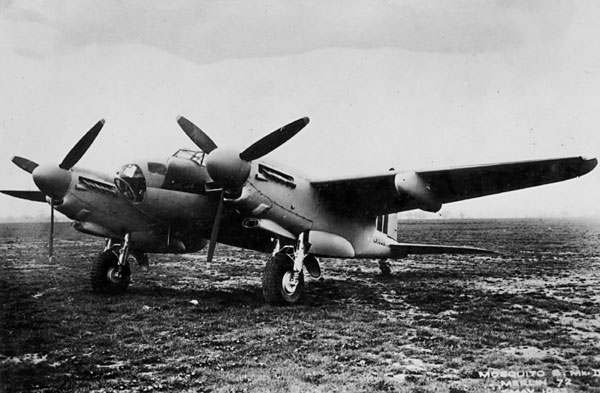
The idea for the Mosquito was forwarded to the government
as early as 1938. The De Havilland design team based the Mosquito on their
plane, the DH-88 Comet, which had won the 1934 London to Melbourne air race. De
Havilland’s idea was simple – to power the plane with two Rolls Royce Merlin
engines so that its sole defence, other than the skill of the pilot, was sheer
speed to keep it out of harms way. The structure of the Mosquito was to be
entirely made out of wood with a stressed skin of thin laminated plywood over a
balsa core. The first Mosquito flew in November 1940, and it went into
production soon after.
The Mosquito was used for a variety of tasks. It was used
as a pathfinder plane during bombing raids on Germany. Flying with Bomber
Command at night, it would attack a specific target ahead of the main bombing
force, guiding them to that target. The Mosquito suffered fewer losses than any
other plane attached to Bomber Command. The Mosquito was also used for the
bombing of specific targets as it had the speed for low level accurate bombing.
Some Mosquitoes were equipped with heavy cannon and were used to attack German
armour on battlefields in western Europe. Some were equipped with night-fighting
radar and as a result, the Mosquito became the most successful British
night-fighter. Some Mosquitoes were fitted out with rockets and attacked Nazi
shipping
An example of the tremendous accuracy
achieved by Mosquitoes can be shown by comparing figures for the attacks on the
V-weapons sites. The average tonnage of bombs required to destroy one of these
sites by B-17 Flying Fortresses was 165; for B26 Marauders it was 182 tons and
for B25 Mitchells 219 tons. The average for the Mosquito was just under 40 tons!
This was a fantastic excavation and
I was privileged to be invited. The professional way it was handled with
pin point accuracy by a very experienced team was impressive. On behalf of
every who views this recovery at BIG THANK YOU from Spitfire Spares.
I hope you enjoy looking at
the recovery of Mosquito KB224.
Here we go ENJOY
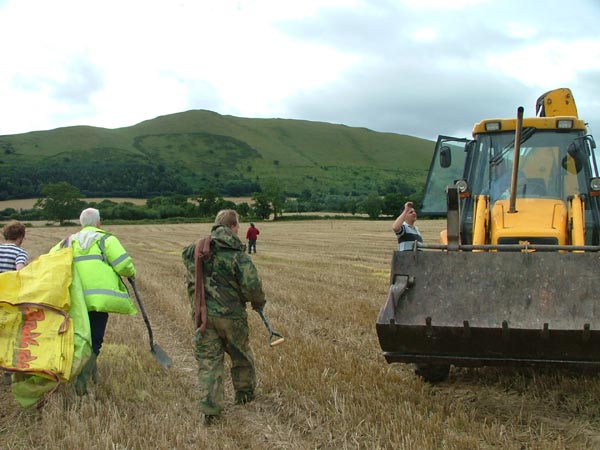
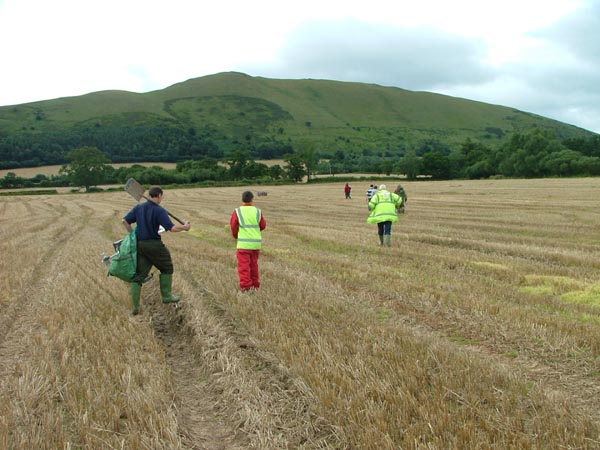
Gareth pins points the engine's position
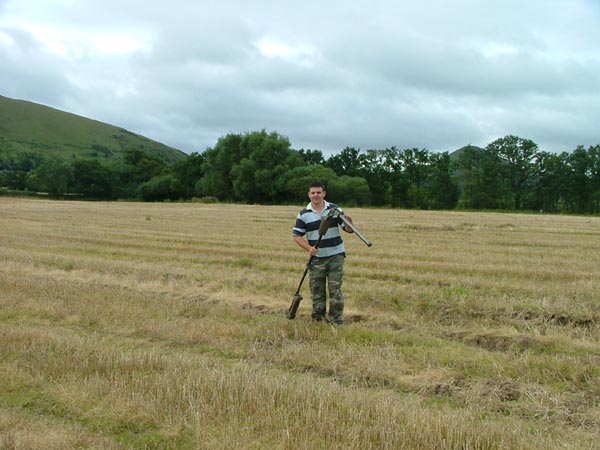
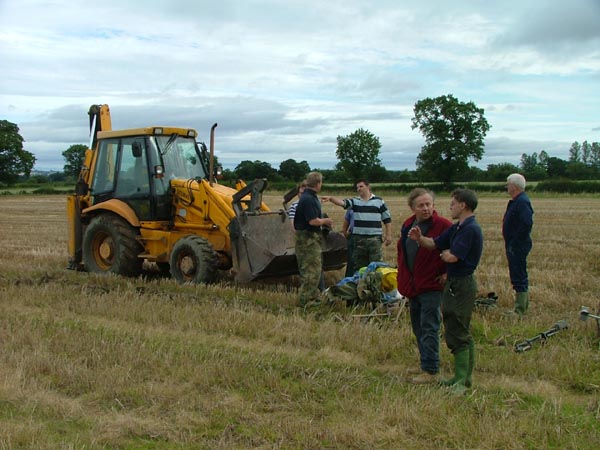
Ian Checking the top soil after stripping
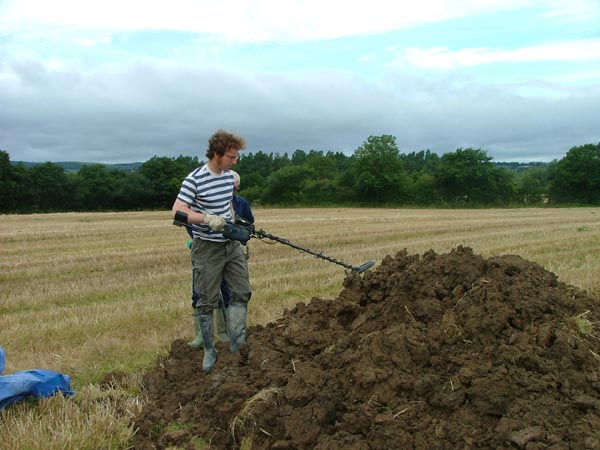
Stripping the topsoil
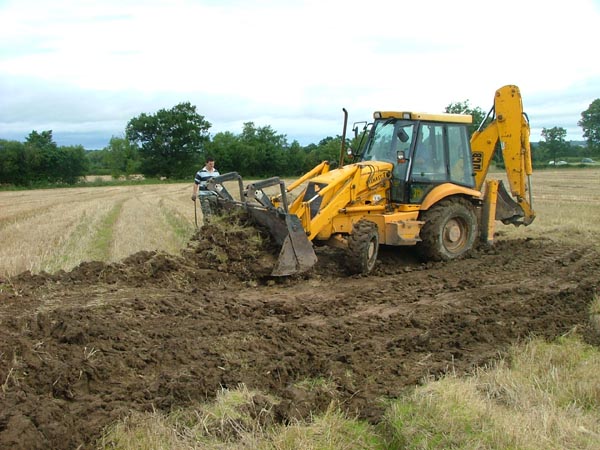
The first find of the day
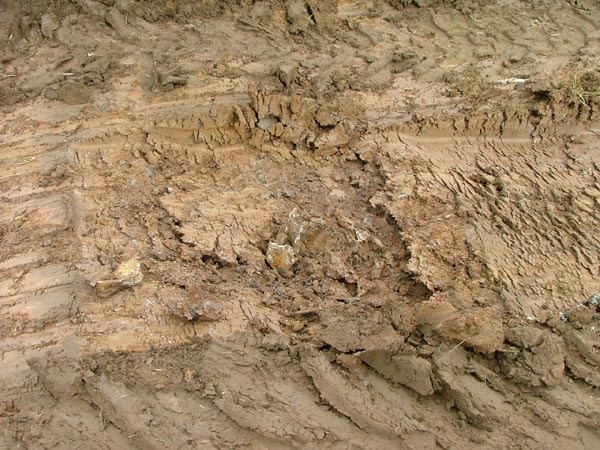
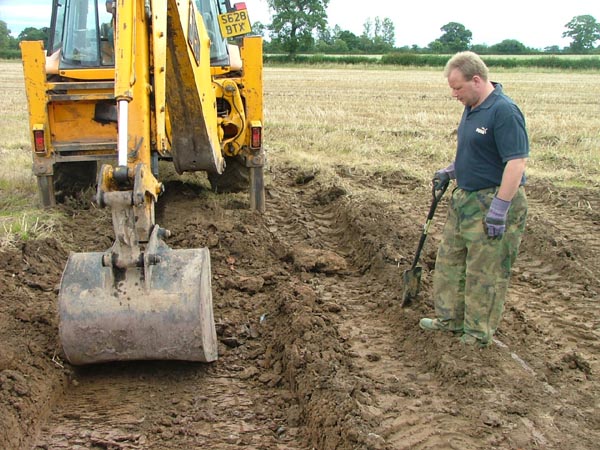
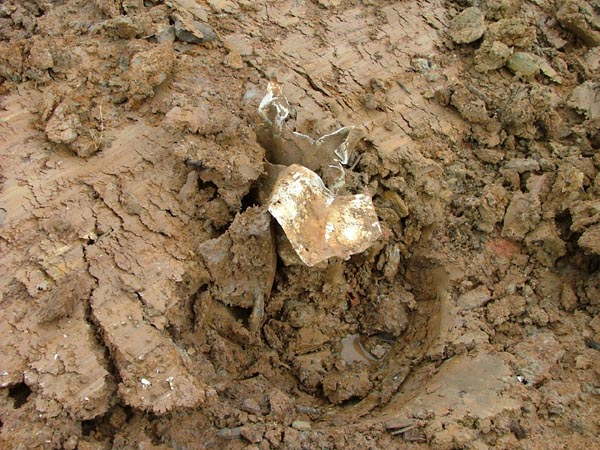
A ballast weight
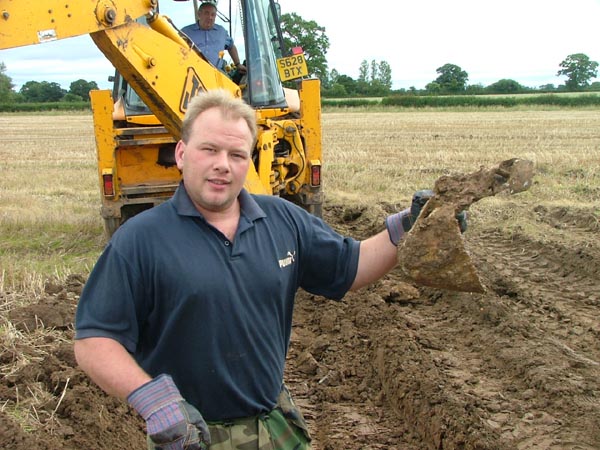
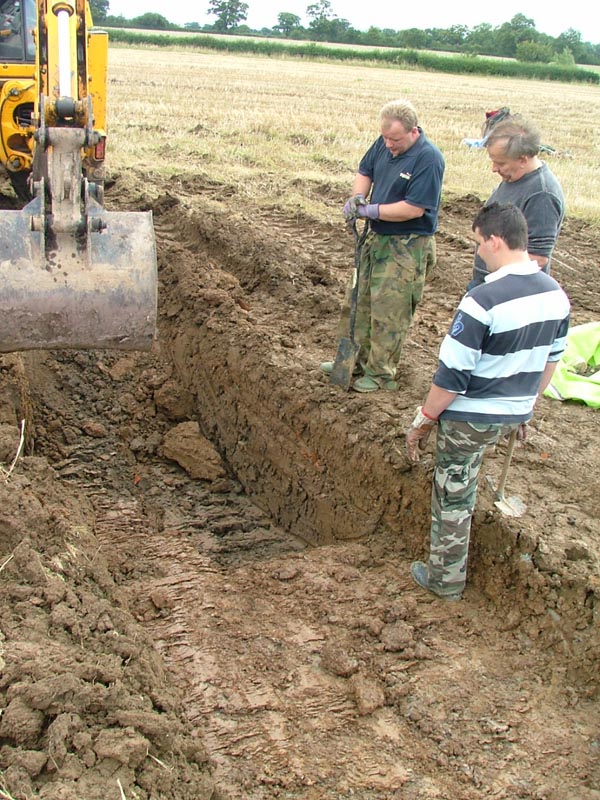
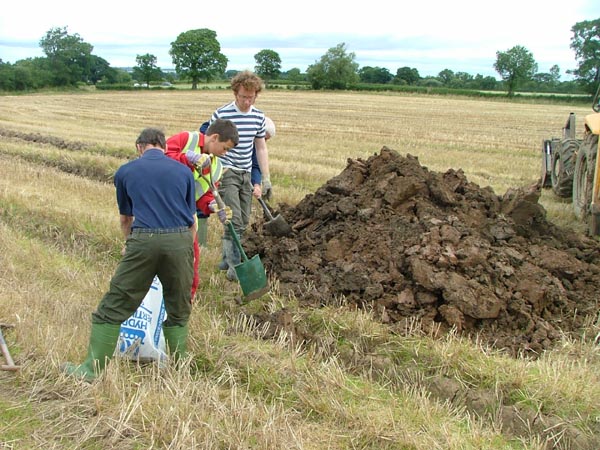
Down we go and finds start to appear
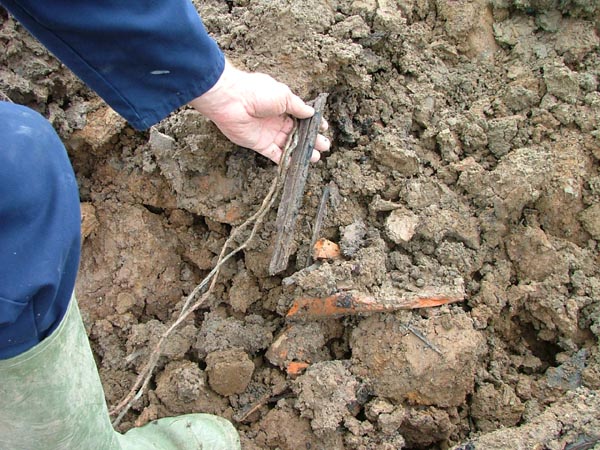
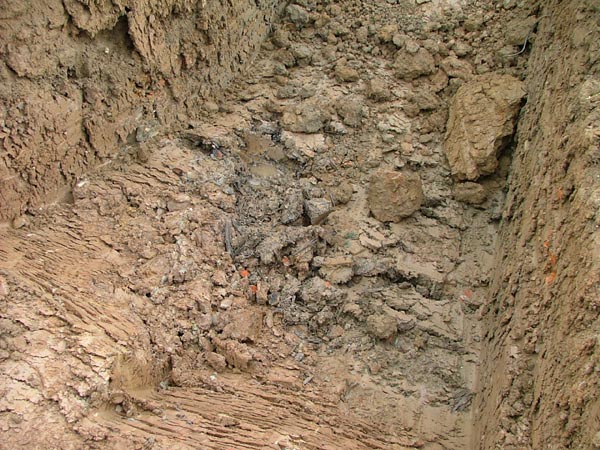
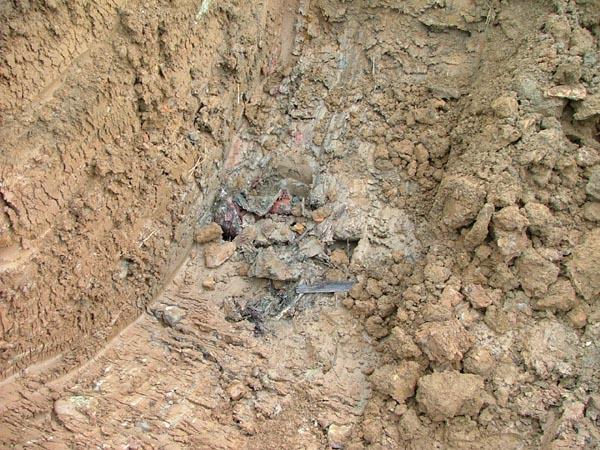
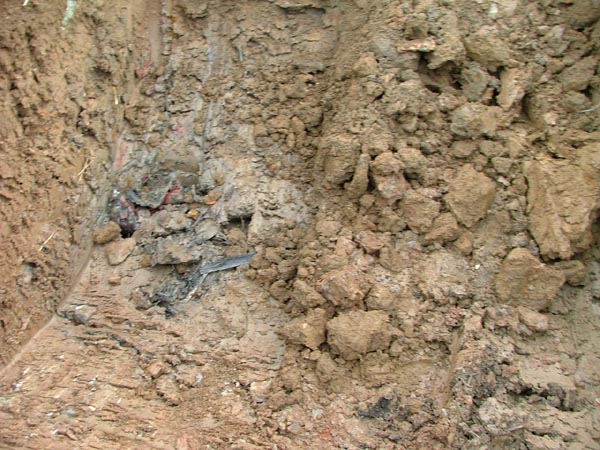
Gareth with the first Merlin part of the day, a very bent
valve.
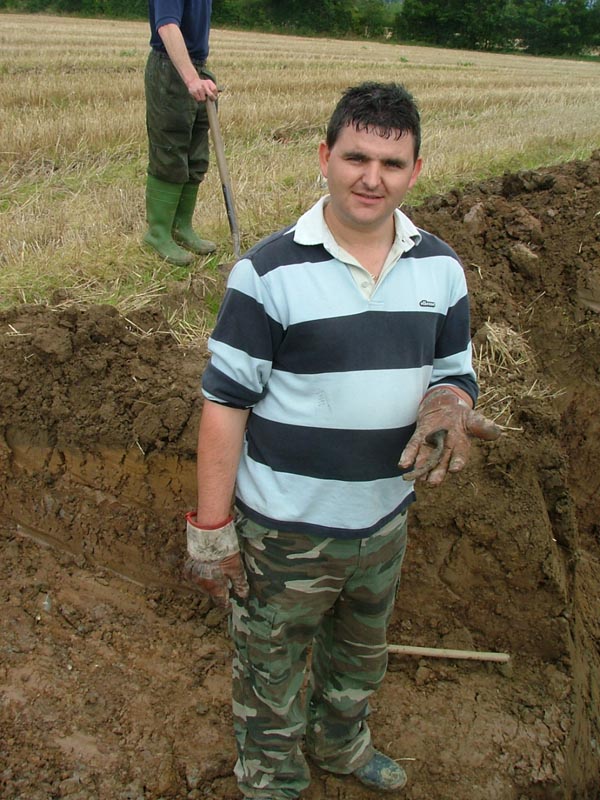
Fuel tank part
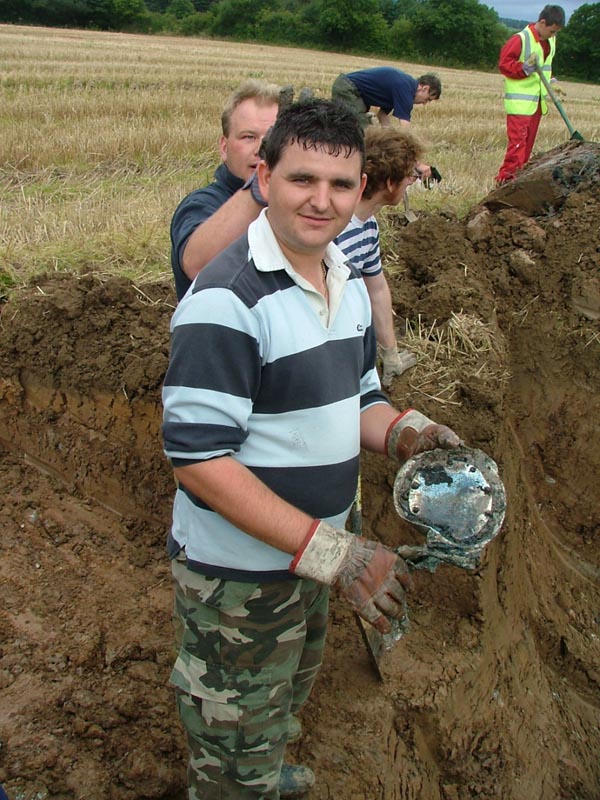
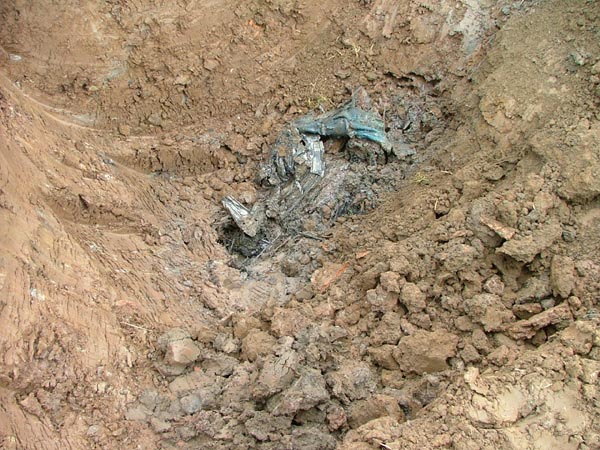
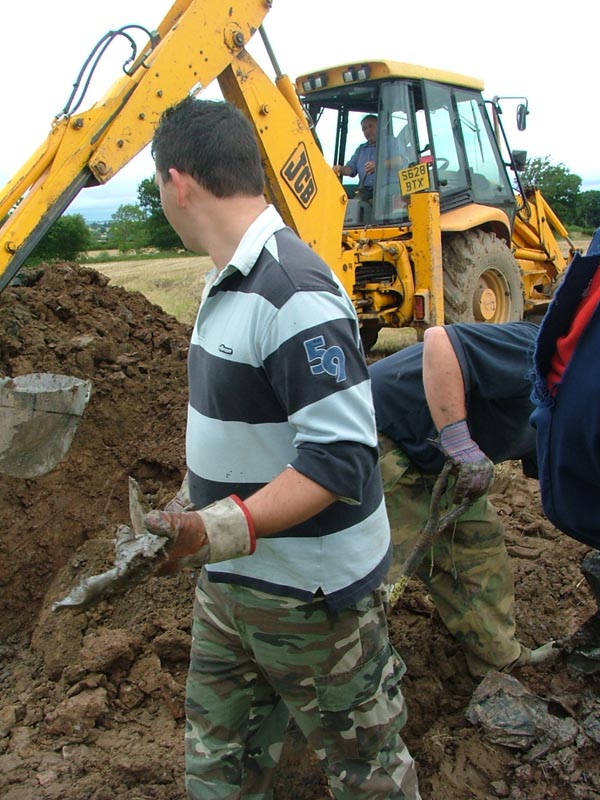
Robert a new recruit with a substantial piece
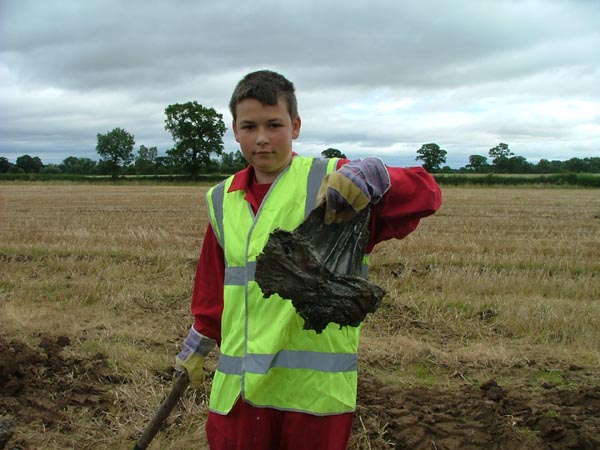
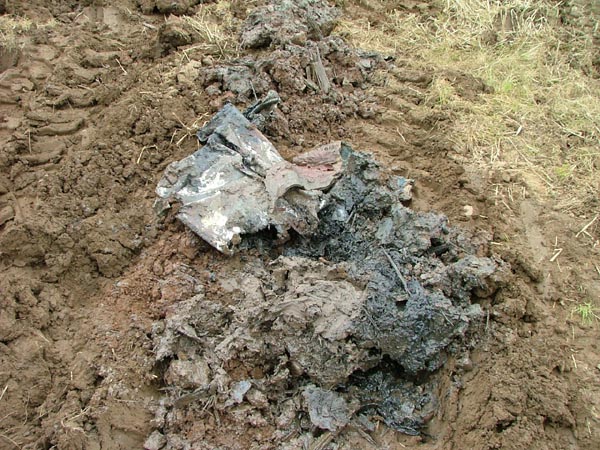
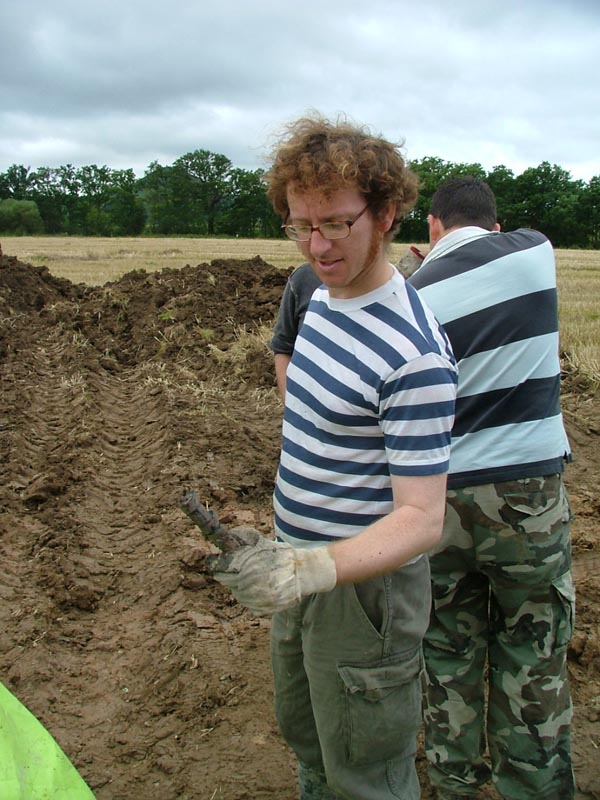
The team discussing their next move. At this stage each
bucket full is carefully selected and removed very slowly.
I am on the right with the camera, I did get down and dirty later in the day.

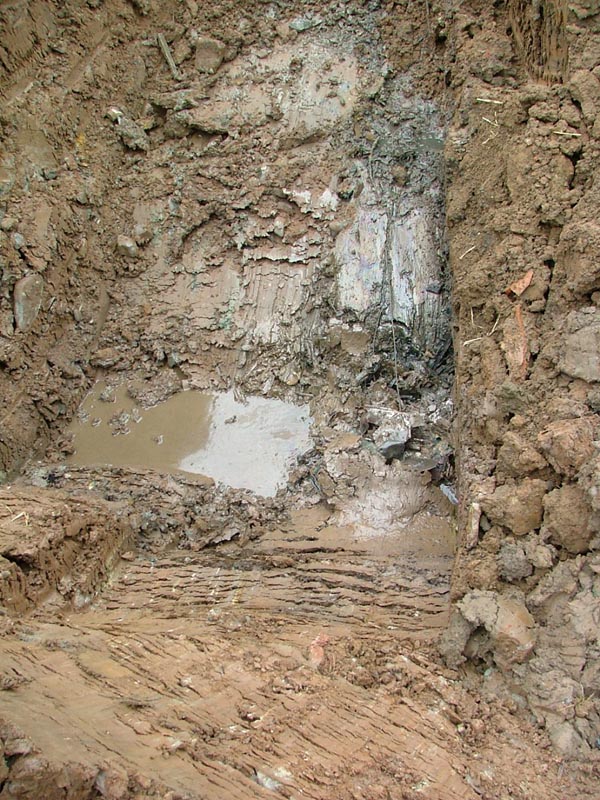
Lots of wreckage at this level.
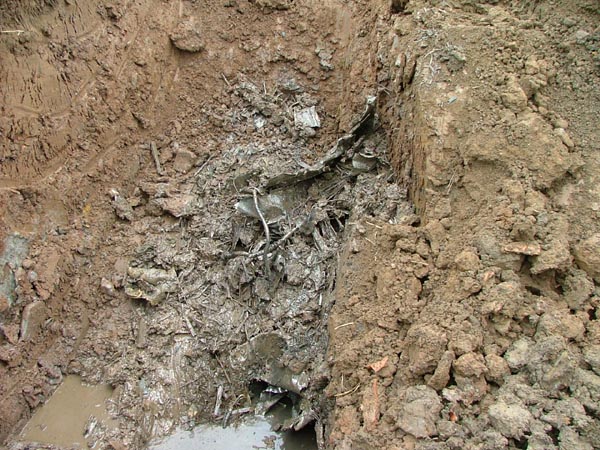
Look carefully at the bottom of the picture just right of
centre you can see the tread of a wheel appearing.
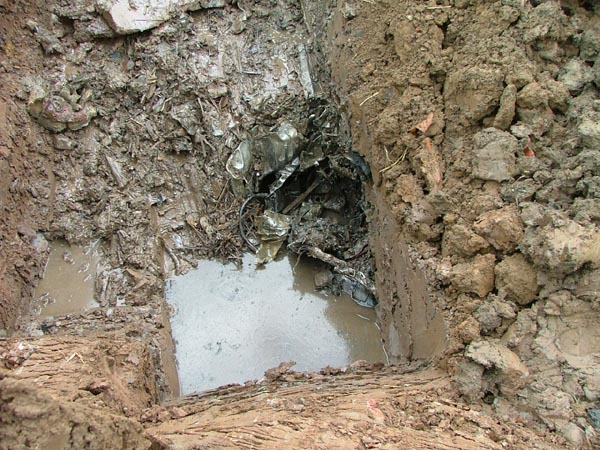
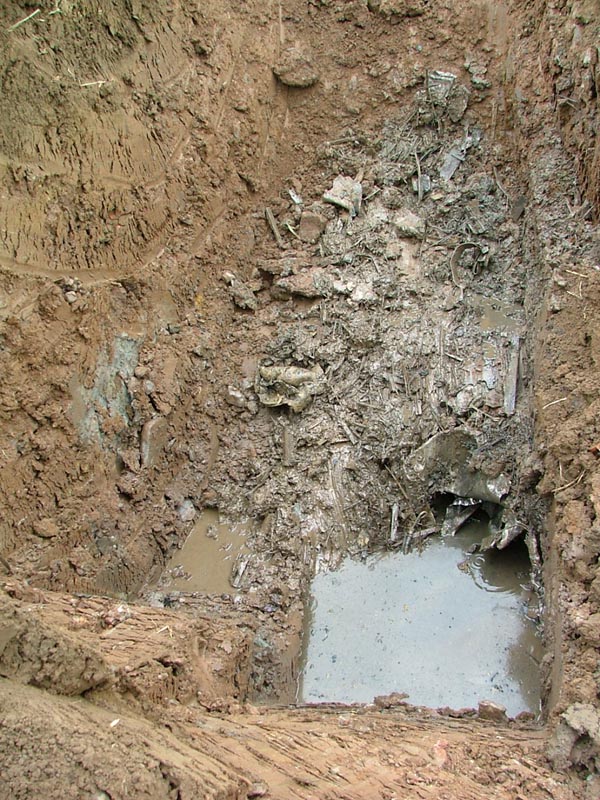
A Merlin Cam guide
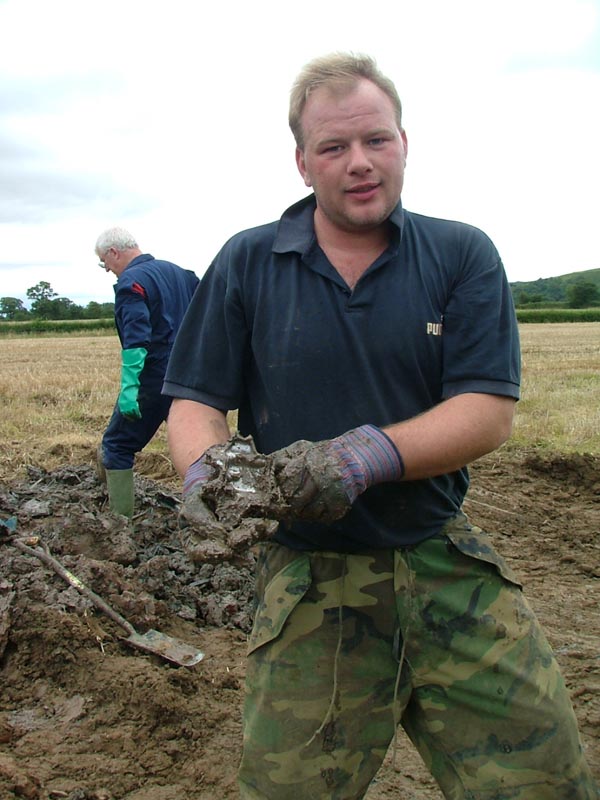
Lots of wood as to be expected in a Mossie remarkably well
preserved
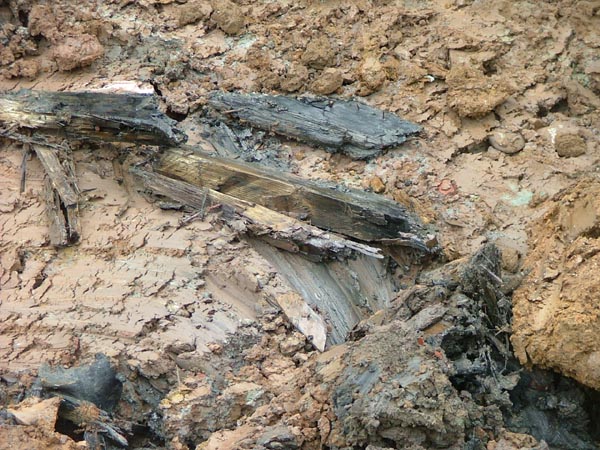
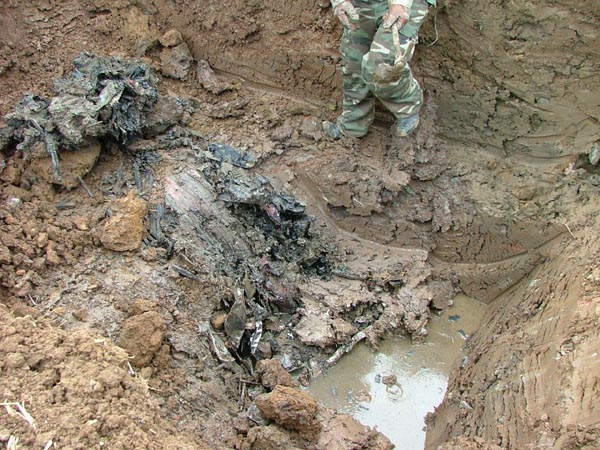
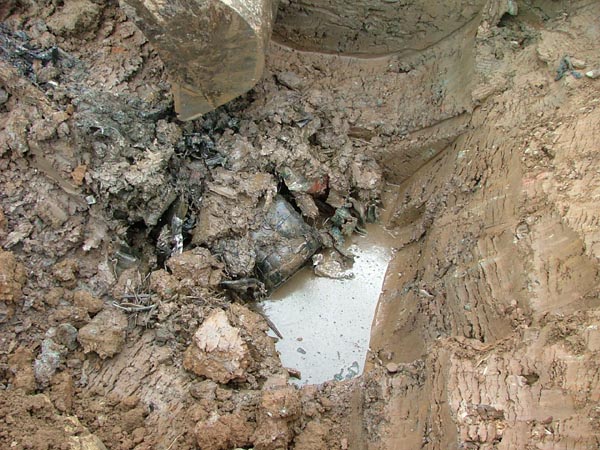
Gareth with his left foot on the wheel.
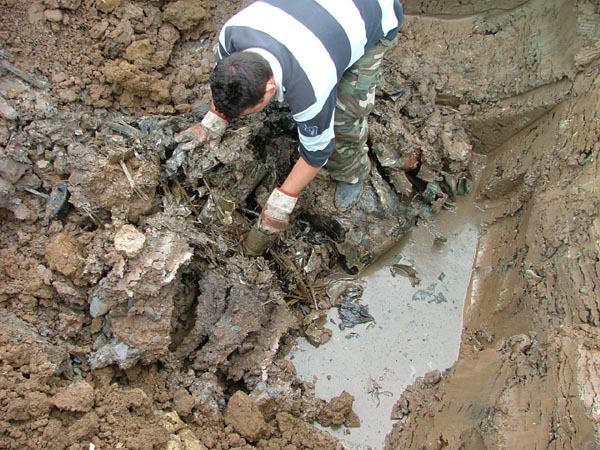
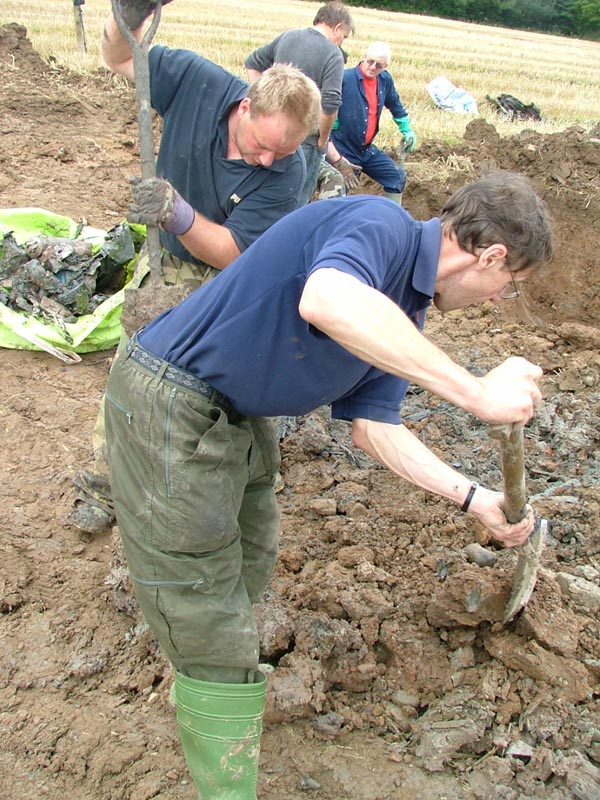

|
